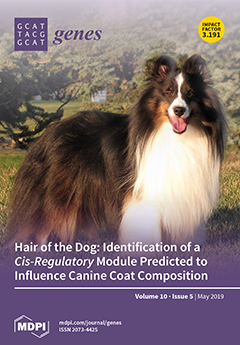We sequenced the entire genomes of ten biphenyl/PCB degrading bacterial strains (KF strains) isolated from biphenyl-contaminated soil in Kitakyushu, Japan. All the strains were Gram-negative bacteria belonging to β- and γ-proteobacteria. Out of the ten strains, nine strains carried a biphenyl catabolic
bph gene cluster as integrative conjugative elements (ICEs), and they were classified into four groups based on the structural features of the
bph genes. Group I (five strains) possessed
bph genes that were very similar to the ones in
Pseudomonas furukawaii KF707 (formerly
Pseudomonas pseudoalcaligenes KF707), which is one of the best characterized biphenyl-utilizing strains. This group of strains carried salicylate catabolic
sal genes that were approximately 6-kb downstream of the
bph genes. Group II (two strains) possessed
bph and
sal genes similar to the ones in KF707, but these strains lacked the
bphX region between
bphC and
bphD, which is involved in the downstream catabolism of biphenyl. These
bph-sal clusters in groups I and II were located on an integrative conjugative element that was larger than 110 kb, and they were named ICE
bph-sal. Our previous study demonstrated that the ICE
bph-sal of
Pseudomonas putida KF715 in group II existed both in an integrated form in the chromosome (referred to as ICE
bph-salKF715 (integrated)) and in a extrachromosomal circular form (referred to as ICE
bph-sal (circular)) (previously called pKF715A, 483 kb) in the stationary culture. The ICE
bph-sal was transferred from KF715 into
P. putida AC30 and
P. putida KT2440 with high frequency, and it was maintained stably as an extrachromosomal circular form. The ICE
bph-salKF715 (circular) in these transconjugants was further transferred to
P.
putida F39/D and then integrated into the chromosome in one or two copies. Meanwhile, group III (one strain) possessed
bph genes, but not
sal genes. The nucleotide sequences of the
bph genes in this group were less conserved compared to the genes of the strains belonging to groups I and II. Currently, there is no evidence to indicate that the
bph genes in group III are carried by a mobile element. Group IV (two strains) carried
bph genes as ICEs (59–61 kb) that were similar to the genes found in Tn
4371 from
Cupriavidus oxalacticus A5 and ICE
KKS1024677 from the
Acidovorax sp. strain KKS102. Our study found that
bph gene islands have integrative functions, are transferred among soil bacteria, and are diversified through modification.
Full article






